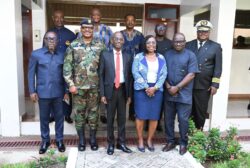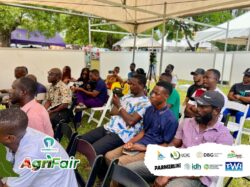Every social development project involves communication: Communication between members of a community and a group; communication between development workers and the people among whom they work; communication between funding agencies and field workers and so on. Communication involves the sharing of ideas – information, of emotions, of hopes and fears – and is part of every human activity.
———- Pratt and Boyden (1985: 156)
Beginning
Every initiative of community development as a social development project, requires effective communication between the different groups of people involved in such a development project within the participating communities. Aruma (1998) asserts that community development projects require effective communication to succeed in participating communities. Therefore, it will be appropriate to keep communication channels open between project participants to inform them about community development projects.
Communication in community development focuses on improving interactions among those who promote change creating positive impact on improving the lives of members of the communities involved and those whom they work together with to achieve their dreams. It is imperative to keep communication channels open between all project participants and organizations involved in community development initiatives in participating communities.
Per Fasel (2000), communication is essential in realizing ease in doing business to ensure that everyone will participate in society. Communication inevitably generates collective action from project participants in community development projects in participating communities.
Fundamentally, communication is the livewire of human culture which is characterized with many activities. This is demonstrated in numerous human activities and organizations beginning from individuals to family as the basic social organization, villages, towns, communities, societies, countries including corporate organizations, non-governmental organizations (NGOs), institutions, religious organizations notably churches among others in the social setting in the contemporary global environment can be likened to human heart as the organ which pumps blood in human body.
Functions examined
A. Sensitization of members of participating communities:
Communication has the ability to raise awareness among community members involved in community development initiatives. In fact, communication has great potential to engage community members so that they truly understand that they are capable of identifying their problems, community needs, and prioritizing them.
Prioritize them appropriately. Encouragement of local community initiatives to identify community problems and propose appropriate possible solutions, and subsequent prioritization of community needs based on use of effective communication to stimulate awareness among members of the participating communities. Sensitization, therefore, plays very important role to consceintise the people of various social settings to understand the reality of their lives in their local environment.
Freire (1985) states that sensitization plays an important role to conscientise the minds of silent majority in order understand the problems that confront the people in their various localities. Thus, raising awareness as a communicative process in community development, repositions people’s thinking to understand clearly that people have problems in their different localities and that the power to solving these problems is in their own hands in their immediate environment and not from outside their community in society.
B. Delivery of vital information:
Provision of relevant information is another role of communication in the community development of the participating communities. Without providing relevant information in the media, people will not be encouraged to take community development actions to improve the living conditions of members of participating communities in society. Pratt and Boyden (1985) rightly assert that the purpose of providing information is, in fact, to enable people to take certain actions.
However, such information will generally motivate people to take action to advance community development initiatives as a process by which the efforts of stakeholders merge with the efforts of other agencies. Government agencies, funding agencies, non-governmental organizations (NGOs), businesses, high net worth individuals among others in community development efforts should strive to match target.
In the view of Pratt and Boyden (1985), information must be relevant in the sense that, of course, it must be the exact information that people need if they really want to perform the intended action. Indeed, the information must be accurate and relevant enough to enable people to take the measures planned to solve their problems and have a positive impact on improving the poor living conditions of people. them in the participating communities.
C. Provision of opportunities for dialogue and discussion:
Providing opportunities for dialogue and discussion with stakeholders in community development is an important role of communication in the community development process. It is clear that people from different participating communities cannot engage in dialogue and discussion to facilitate resolution of community development issues without communication between members of the participating community.
Groups that work to stimulate community development within the community, among business organizations, community development agents and members of the host communities of the companies involved, between agencies finance and field actors working with project participants in the different participating communities, are all connected by communication in dialogue and discussion.
Communication can be used in community development through dialogue and discussion sessions, especially in community consultations, community engagement and meetings to engage members of the community. participants understand the realities of their local problems. It is often observed that communication in dialogue and discussion is guided by the arrangement of the audience at the meeting.
Through the discussion process, new ideas and opinions are actually brought to light to anchor new ideas and opinions or sometimes to change views and attitudes during the meeting ( Okwor, 2009).
D. Ability to share information and ideas:
Providing opportunities to share information and ideas among people from diverse communities remains an important role of the communications people receive to facilitate people-driven community development projects. Indeed, community development depends to a large extent on communication, especially the sharing of relevant information and ideas necessary to improve community development activities in the participating communities. Community development is a transaction between community development practitioners or change agents and project participants in participating communities.
Community development is a transaction between community development practitioners or change agents and project participants in participating communities. Peters in Garrison (1989) considers communication to be a voluntary process of sharing experiences. Communication provides opportunities for people to share information and experiences related to community development activities such as Participatory Rural Assessments (PRA), explaining the community development process, identifying and Prioritize community needs, plan, implement, manage, and evaluate community development.
To ensure the sustainability of community development projects, project participants must fully participate in all phases of the project from project definition and design through to implementation. The sharing of information, ideas and experiences among diverse communities encourages other communities to deal with similar situations in their locality (Pratt and Boyden, 1985). The sharing of information, ideas, and experiences that are evidently part of human culture must be used adequately to address similar problems prevalent in other social settings of society.
E. Indispensable tool in all stages of community development:
Communication as an indispensable tool for human existence in the human environment applies to all stages of community development, from awareness raising to assessing community needs, identify community needs and priorities, plan community development, implement community development projects and programmes, manage community development projects and programmes, monitor and evaluate projects.
Thus, communication provides an environment conducive to promoting community development in a humanistic environment. Onah (2012) argues that the media tries to create a favourable environment for programmes and projects to develop in the society, the media plays a very important role in promoting the development of the community in the society. In fact, communication is an indispensable tool for community development in society. There will be no community development without communication in different communities in the human environment.
F. Unifier in community development activities:
Communication is an important unifying factor in community development activities in diverse communities in human habitats. Communication is the unifying apparatus of community development activities in different communities of society. While commenting on a similar topic, Onah (2015) views the communication function as an integral part of organizational activities. Indeed, communication as a unifying element of community development, activities must be well understood by project participants and stakeholders from different communities in the environment. People. There is no community development without communication in a humanistic environment.
G. Motivates target audience to promote community development:
Communication objectives help deliver ideas, information, suggestions or solutions that enable people to address specific human concerns in order to improve human living conditions in a humanistic environment. Onah (2012) further notes that media targeting helps to create demand for specific services in society.
In fact, good communication goals must motivate the target audience to identify, evaluate, prioritize, accept, act on, and choose a desired approach to solve common problems of concern. with the ultimate goal of improving the lives of people in the different communities involved in human life. In fact, communication applies to all areas of human interaction in the development process.
Ending
Communication provides members of participating communities the opportunity to truly understand the problems their communities are facing and, to some extent, how to solve them through collective action to improve the living conditions of people from different communities. Communication helps communities to break out of the culture of silence and address the problems and issues of concern in their various communities.
As part of community development, project participants need to develop confidence. Effective communication empowers members of participating communities by providing relevant information that can address community development challenges common in their diverse communities.
References
Pratt, B. & Boyden, J. (1985). The Field directors’ handbook: An Oxfam manual for development workers. Oxford: Oxford University Press.
Onah, F.O. (2015). Human resource management 4th edition. Enugu: John Jacob’s classic publishers Ltd.
Fasel, D.K. (2000). Partnering in action. Oxford: How To Books Limited.
Aruma, E.O (2018). Roles of communication in community development, Vol.5, No.1, pp.1-10
Panos, (2007), ‘At the Heart of Change: The Role of Communication in Sustainable Development’, Panos Institute, London
About the Writer
Ebenezer is a Development Communication professional with a penchant for researching, practicing and writing on multisectoral issues related to development communication globally.
You can reach him on [email protected]
LinkedIn: Ebenezer Asumang










